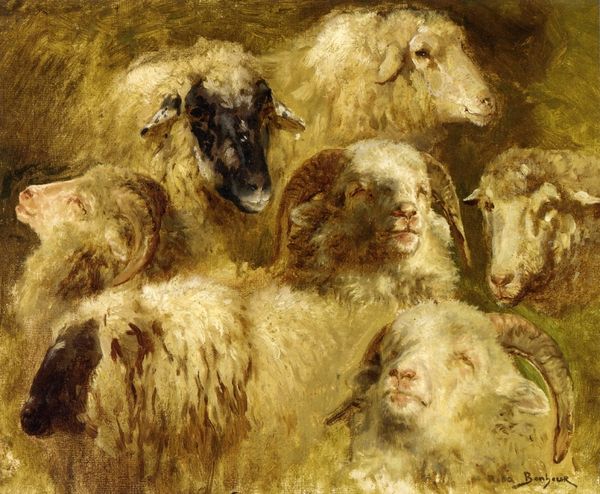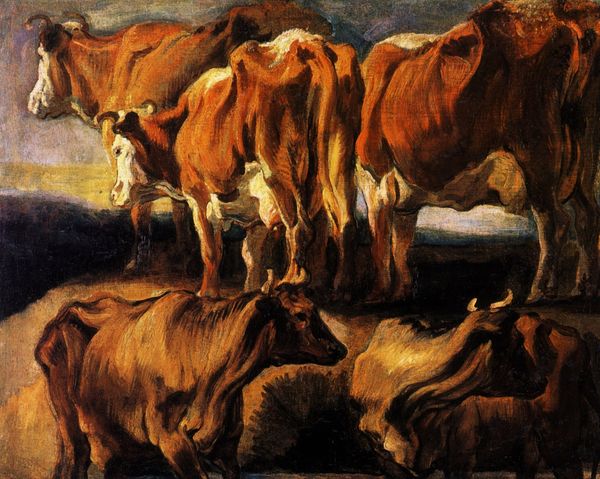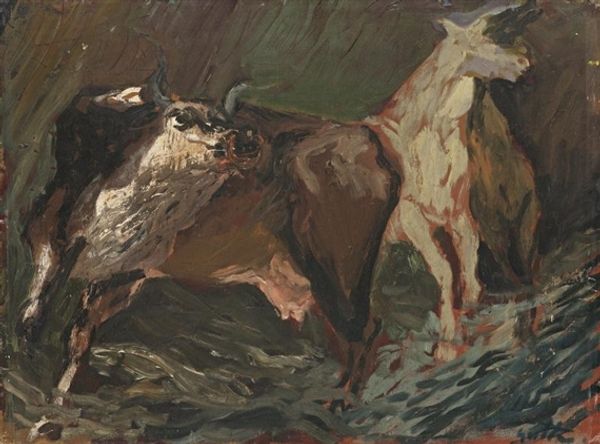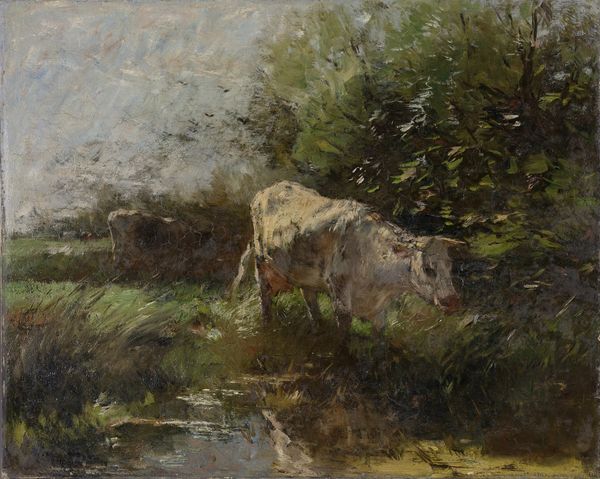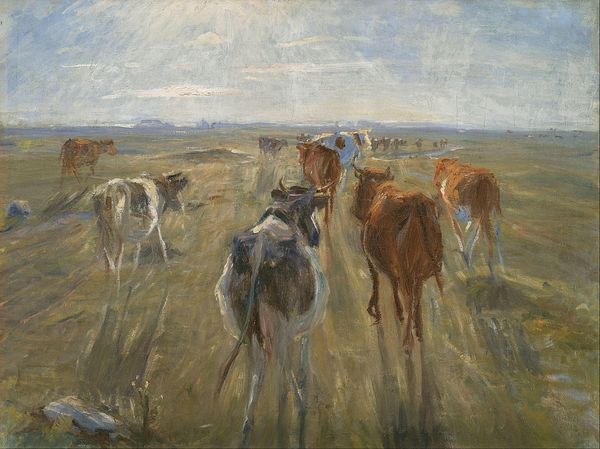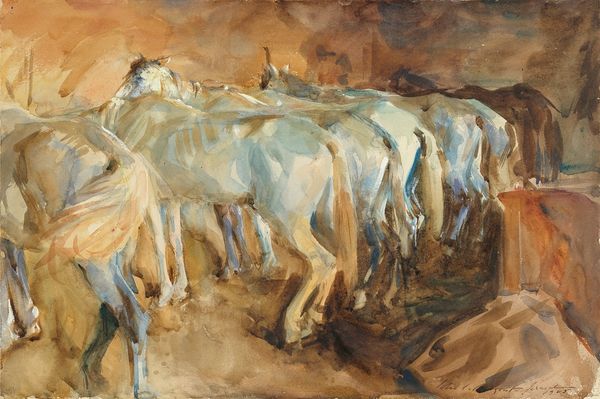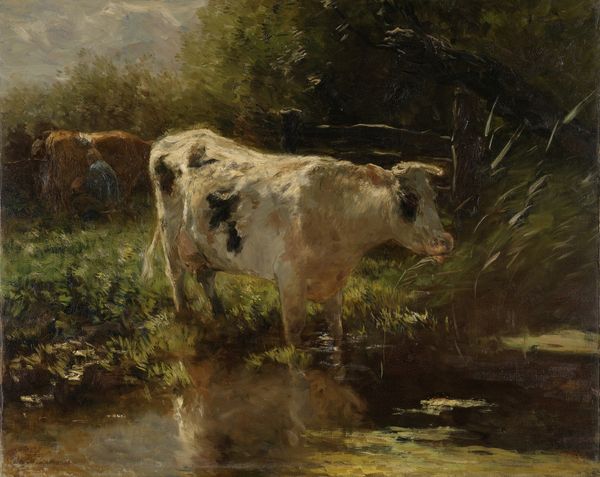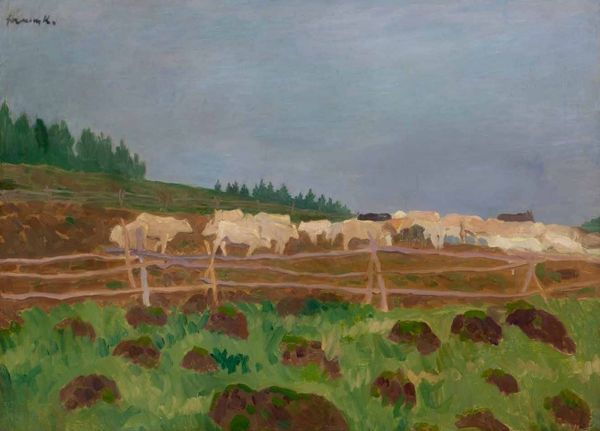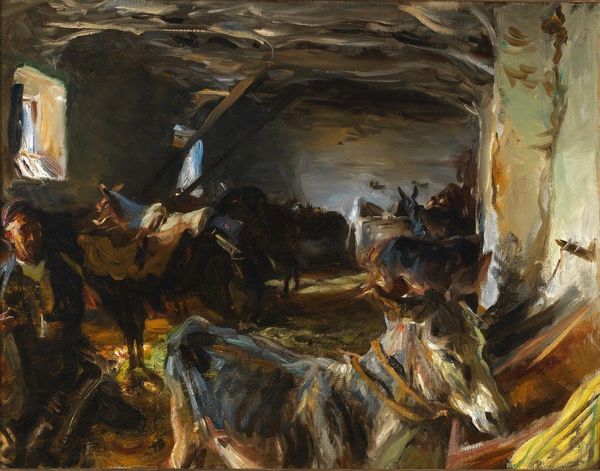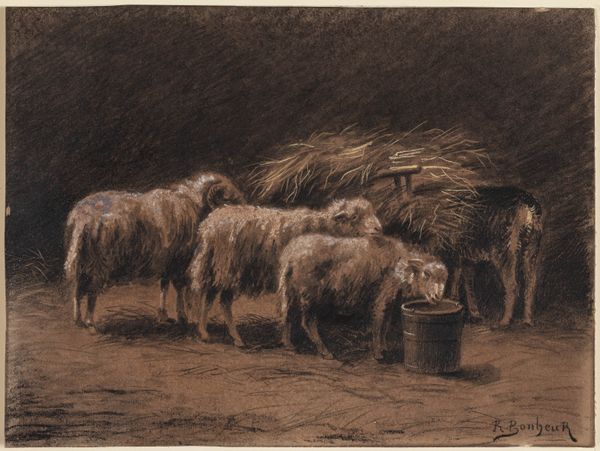
painting, plein-air, oil-paint, impasto
#
painting
#
plein-air
#
oil-paint
#
landscape
#
oil painting
#
impasto
#
romanticism
#
genre-painting
#
charcoal
#
realism
Dimensions: 45.8 × 37.8 cm (18 × 14 7/8 in.)
Copyright: Public Domain
Curator: Looking at this canvas, the rough strokes create a certain… bleating confusion. It is somewhat endearing. Editor: Quite a contrast with its title, "Unfinished Study of Sheep" by Constant Troyon. Executed circa 1850, this oil painting exemplifies the move towards realism. What strikes you about the implied symbolism? Curator: Sheep have resonated through millennia, haven't they? From ancient sacrificial rites to Christian allegories of the flock and the shepherd, these animals evoke themes of sacrifice, docility, and collective identity. It's quite remarkable how such a commonplace animal carries such significant weight in our collective consciousness. Editor: Agreed. Troyon’s use of impasto adds tangible texture to the fleece. I'm struck by the chromatic unity, but how do you perceive the visual cues suggesting Troyon’s influences? Curator: One sees a definite embrace of rural life—an ethos central to much of Romanticism as well as Realism. These aren’t just livestock; they’re participants in an idyllic scene. Editor: The loose brushwork and limited palette do foster intimacy, yet this almost visceral quality aligns it also with early impressionistic explorations. Curator: There's something deeply evocative in the unfinished nature of the work itself. Editor: Exactly. The unfinished nature creates a window, allowing our imagination to flesh out Troyon’s initial conception and invite our projection. Curator: Indeed. Troyon has bequeathed a rich repository for contemplation beyond just the painted surface. The canvas then echoes across time, beckoning interpretation anew with each viewing. Editor: Agreed. It's interesting how much meaning is found when analyzing form and exploring the symbolic language within Troyon’s landscape.
Comments
No comments
Be the first to comment and join the conversation on the ultimate creative platform.
